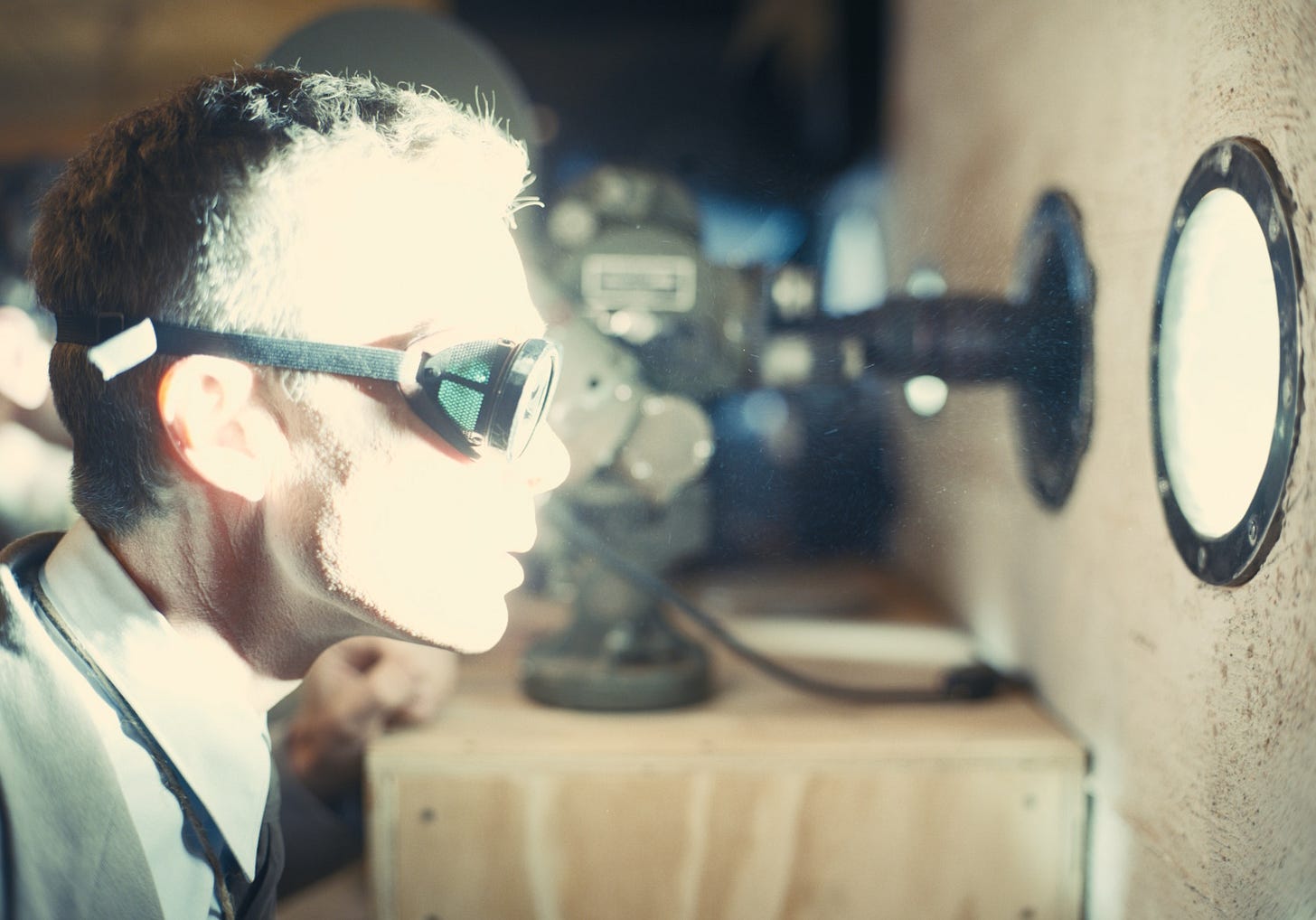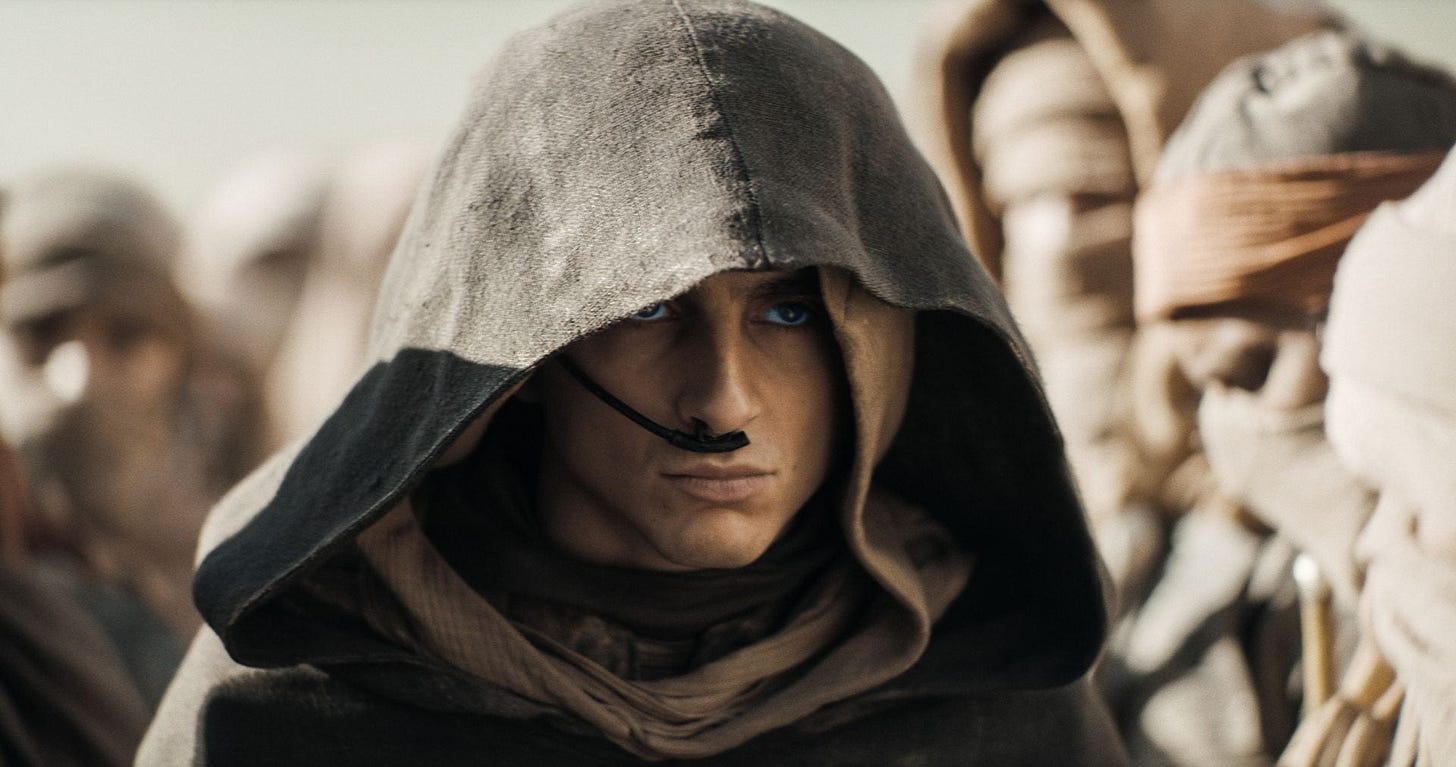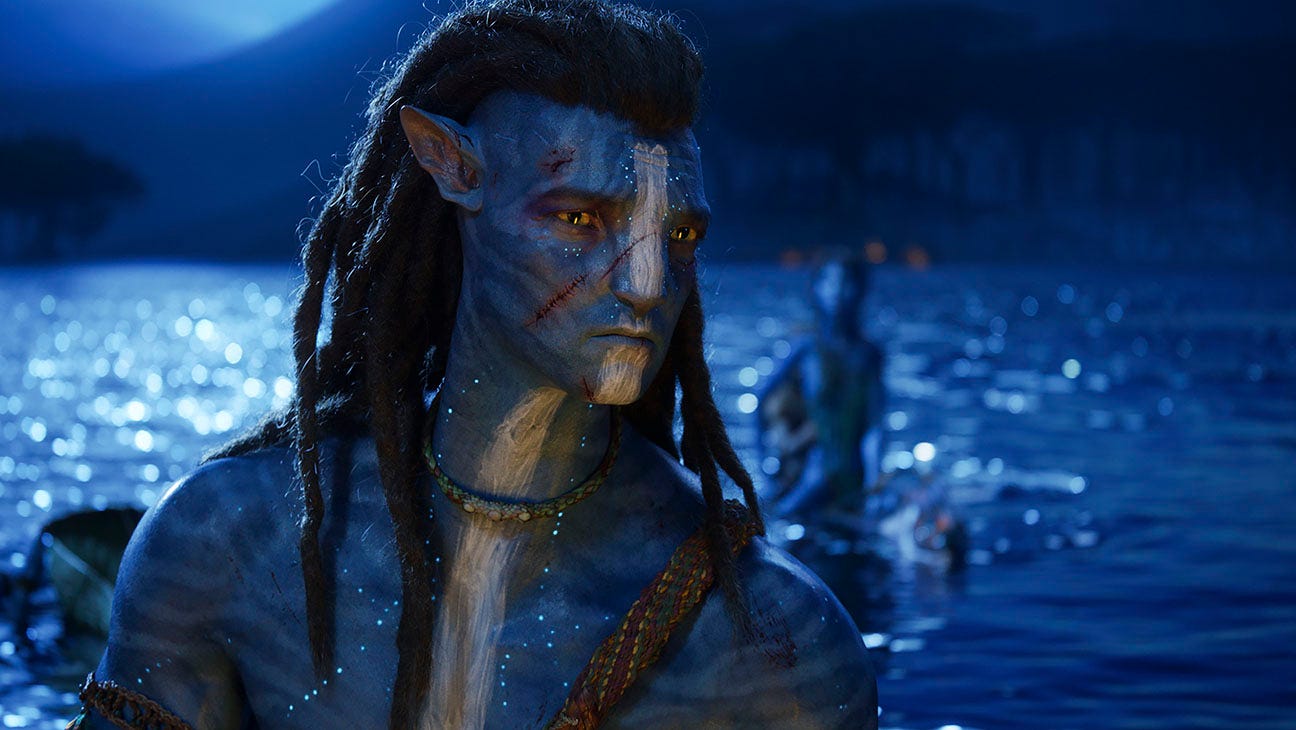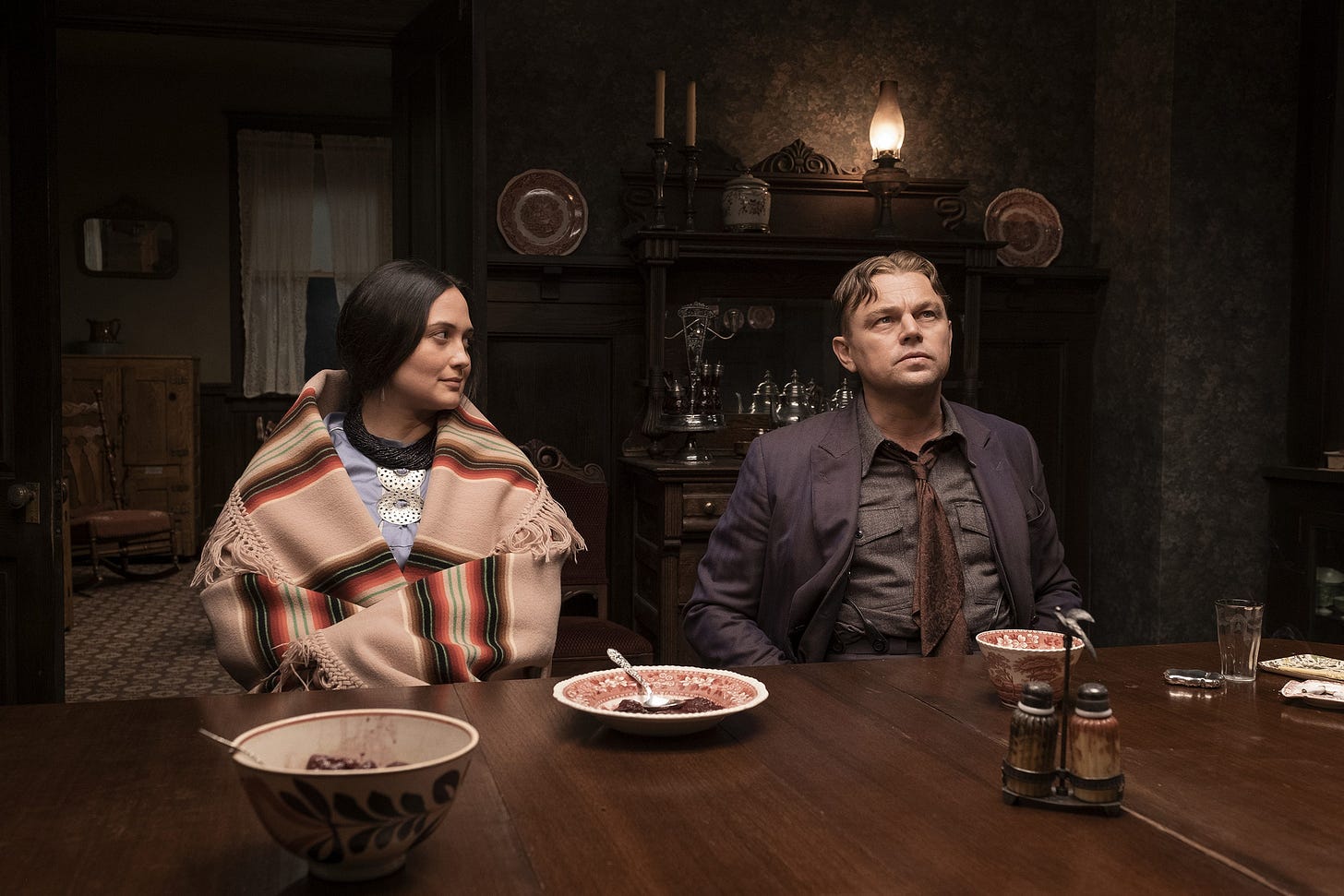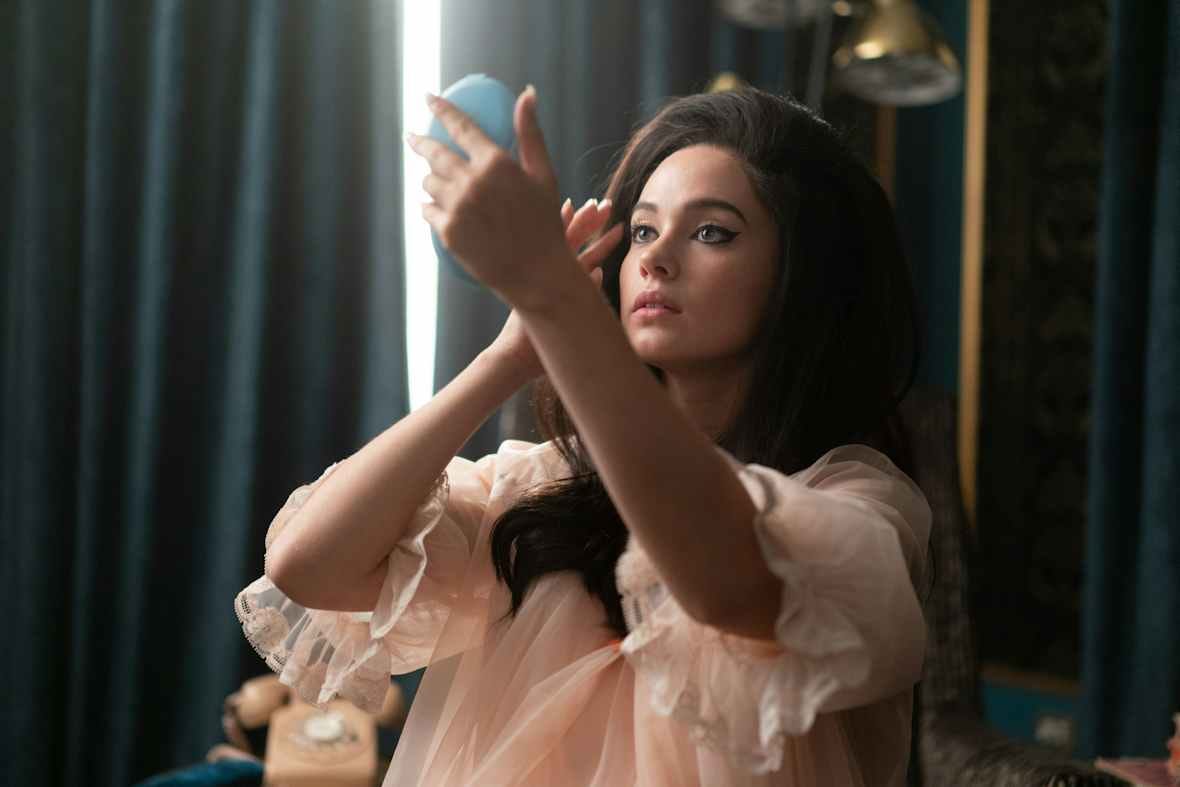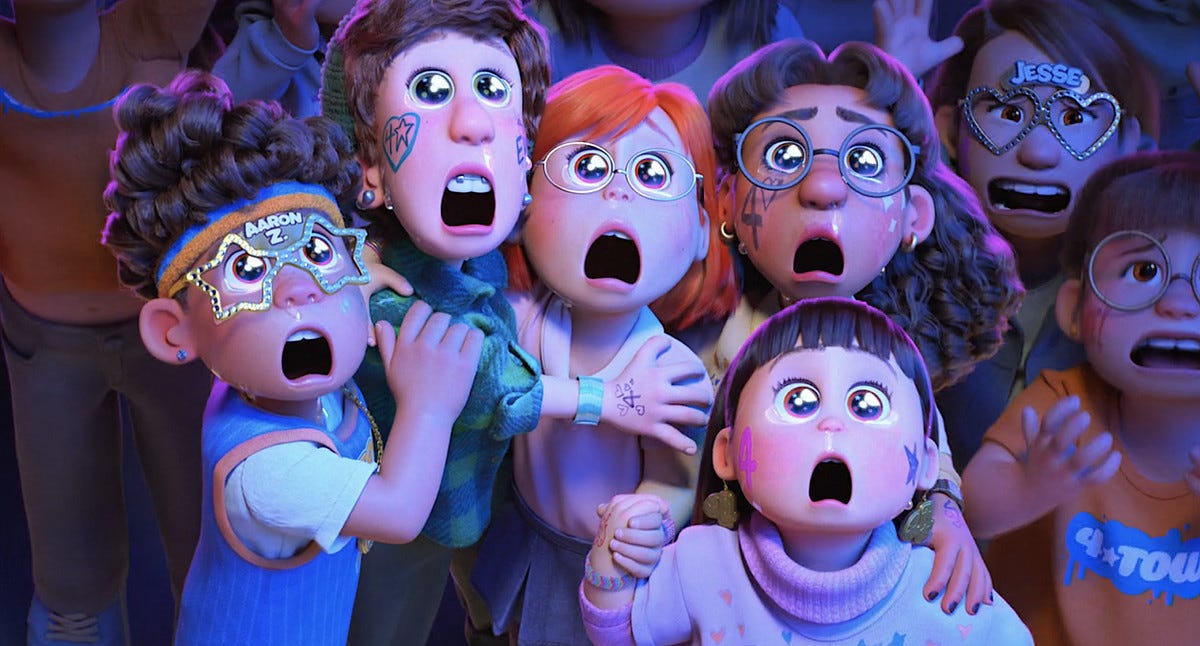It was 731 fateful days ago that I started CineMancuso, a chance for me to share written reviews of new films with all of my tens of adoring fans. Since then, I’ve covered over 100 films, and I’d like to share some highlights from this period.
Thank you for being a part of this journey with me.
Oppenheimer
My first introduction to IMAX 70mm film was back in the summer of 2017; I went to see Dunkirk at the IMAX theater in Providence, one of only 30 in the world capable of projecting this premium film format. I probably hadn’t seen a film projected on film *at all* since the practice was phased out for more reliable (if less dynamic) digital projectors about a decade earlier, and I had grown dubious of the fetishization and idolization of “film,” a pervasive fixation of “film bros” at Tisch. But this was different - the colors were rich, the clarity outshined the best 4K televisions, and the intensity of the sound was matched only by a screen six stories tall, well beyond my peripherals. Easily Nolan’s most visual film, Dunkirk proved to be an incredible demonstration of this format’s power and cinema’s potential. I quickly became a film evangelist, particularly for IMAX 70mm, its expanded aspect ratio, arguably vertical in nature, stretching into the heavens. To my mind, every film should be made this way, yet many disagreed, citing the format’s strength as a weakness: it’s great for big movies, but it wouldn’t work for smaller stories. This perspective feels terribly shortsighted; the texture of the human face, framed with portraiture proportions, blown up to over 75 feet tall, produces a level of uncanny intimacy. That being said, Dunkirk, a high octane battle for survival, wasn’t the best showcase for this theory (and I didn’t see Nolan’s Tenet in theaters due to the pandemic). But finally, six years later, I’ve been vindicated by Oppenheimer, a three-hour interpersonal-political-thriller-epic-tragedy that prioritizes the humanity at the heart of history - to great success.
Spider-Man: Across the Spider-Verse
Perhaps hindsight finds meaning where there is none, but change always seems to manifest at the moment of maximum stasis. Indeed, by the late 2010s, the superhero genre and the animation medium, both financial juggernauts and popular entities, had grown consistently stale, regularly predictable, and frequently mediocre - both were due for a shake-up. Enter Spider-Man: Into the Spider-Verse, a radically expressive film that uprooted expectations and challenged convention. Where its contemporaries were afraid to make waves, the 2018 film dove head-first into bold new animation styles while introducing general audiences to a biracial Spider-Man more reflective of current moment. Its impact on the industry is unquantifiable, with countless animated films adopting its blend of traditional two-dimensional principles with computer-generated three-dimensionality. Equally unquantifiable is the praise awarded to it by critics and fans, often citing the film as one of the best ever made - period. This consensus is near universal…but I’m an outlier. Look - I LIKE that original film, particularly for its inventive (if perhaps dizzying) visuals, but it’s never quite satisfied me on an emotional level, and I appreciate its element more than I enjoy watching the film itself. So after seeing the almost unprecedented acclaim for its sequel Spider-Man: Across the Spider-Verse, I was admittedly a bit skeptical. I was fairly confident that the film would be just as good as the first, but from my perspective, that wouldn’t result in an earth-shattering medium-defining success. But Joaquim Dos Santos, Kemp Powers, and Justin K. Thompson have directed a film that has defied my expectations, and while the hype is a bit overblown, I’m beginning to see what everyone else saw - lightning rarely strikes twice, but this sequel is poised to also revolutionize the industry as its predecessor so effortlessly did five years ago.
Dune: Part Two
Good filmmaking is good filmmaking - technological advancements are made and cultural tastes change, but on some level, quality stands the test of time. This is why The Lord of the Rings, two decades later, still shines as one of the best film trilogies of all time, if not THE best. This is why the original Star Wars has inspired over fifty years of prequels, sequels, spin-offs, books, comics, video games - you get the point. But despite the lasting legacy of such films, their initial impact should not be understated or overlooked; I was too young to see any of those Middle-earth classics in theaters, and the destruction of the Death Star precedes me by about twenty years, yet I always wondered what it must’ve been like to see these films in theaters for the first time. Yes, these films and those like them are unprecedented genre spectacles, but most critically, they gave audiences something that they had never quite seen before. Films such as these release infrequently, sometimes only once in a generation - for many people, that was Denis Villeneuve’s Dune, an ambitious science-fiction epic adapting the iconic and seminal novel of the same name. The second attempt at a big-screen adaptation, Villeneuve’s film only covers the first half of the novel and was released during the waning but still deadly months of the pandemic, yet critical reception was strong enough to encourage Warner Bros. (which would soon become a hollow shell of itself) to greenlight the much anticipated sequel. Unfortunately, I missed out on the initial run of that film, finally watching it on an outdated hotel television while traveling for work. But even in less-than-ideal conditions, I could appreciate the film’s scope, Villeneuve’s strong direction, and the source material’s rich and textured world. But then I saw Dune: Part Two, a follow-up better than its predecessor in almost every way. With a renewed commitment to a vision decades in the making, Villeneuve crafts a once-in-a-generation epic that must be seen to be believed - and you should do so on the biggest screen possible.
Avatar: The Way of Water
George R. R. Martin’s The Winds of Winter; Valve’s Half-Life 2: Episode 3 (or even Half-Life 3); James Cameron’s Avatar 2 - these projects and more have all become shorthand for development hell, procrastinating creators, and fruitless hope for a continuation that may never come. But a follow-up to Cameron’s mammothly successful space epic (becoming the highest-grossing film of all time, then losing that distinction to Avengers: Endgame, only to regain it through re-releases - screw it, they’re both owned by Disney, so who cares) seemed inevitable, yet Cameron’s notorious perfectionism ballooned the scope of the nascent franchise. One sequel became two, which became four, and it appeared as if we would never get to return to the visually lush and politically simple world of Pandora. But not all famously stalled projects stay that way forever; a select few break through the inertia and take the radical step of *existing*. At the AMC Lincoln Square, as Nicole Kidman concluded her now iconic treatise on the power of the movies, I experienced this evanescent out-of-body experience, as if I was peering into another dimension to witness something that does not and could not exist in my own world. That something is Avatar: The Way of Water, representing more than a decade of anticipation from general audiences who wanted to see it happen and cynical detractors who wanted to see it fail. If you were expecting any major reinvention in one direction or the other, however, don’t hold your breath; Cameron’s first film in 13 years doubles down on what made the original work - and also what held it back.
Killers of the Flower Moon
Back in May, Deadline spoke with Martin Scorsese and produced a comprehensive interview with the New Hollywood master. At its end, the iconic director observed that the whole world had opened up to him, but he lamented that it was too late. Pressed to elaborate, he confessed, “I’m old. I read stuff. I see things. I want to tell stories, and there’s no more time. Kurosawa, when he got his Oscar…he said, ‘I’m only now beginning to see the possibility of what cinema could be, and it’s too late.’ He was 83. At the time, I said, ‘What does he mean?’ Now I know what he means.” There have been, are, and will be once-in-a-generation talents that are as talented as they are devoted to cinema as a medium, but Scorsese may prove to be the artform’s most devout follower. Despite a decades-long career, filled with both critical and commercial grand-slams and strikeouts, the 80-year old filmmaker still feels the call to create with an unbounded enthusiasm tempered only by the slow march of time. Fifty years exactly after his first “major” film Mean Streets, Scorsese’s Killers of the Flower Moon represents much - a potential climax to a storied filmography; a sign of a changing industry willing to back mammothly-large (both in scope and length) historical epics; and a move to provide more complicated representation to marginalized communities. But above all, the film is a breathtaking crime epic, a revisionist Western with intergenerational appeal, and a bold commitment to cinema in our transactional media landscape.
Priscilla
When I reviewed Baz Luhrmann’s Elvis last summer, I labeled it as the first music biopic epic, “dense in its breadth,” if perhaps lacking a clear thematic intention. Some of the sheen has certainly worn off, but Austin Butler’s iconic take on the King coupled with Luhrman’s characteristic visual personality stand as a testament to the film’s commercial, if not always critical, success. But Sofia Coppola, while stylistic at times, is about as far from someone like Luhrmann as you can get. Her best work provides a soft tenderness that compels contemplation, contrasting Luhrmann’s assault on the senses. Whether intentionally or not, Coppola has brought her work into conversation with his by releasing Priscilla a little over a year after Luhrmann’s take on the musical icon. Each film centers their titular protagonist’s perspective, but Coppola provides a minimalist contrast to Luhrmann’s maximalistic impulses.
Turning Red
As he moved his animation efforts from comic shorts to full-fledged features in the mid-1930s, Walt Disney, partially motivated by his need for validation from the industry at large, made realism the core tenet of his vision for American animation. For Snow White, he would have his animators rotoscope real actresses to get her movements just right. For Bambi, he brought real wildlife into the studio for his animators to study. This wasn’t Steamboat Willie anymore - this was art (as if Steamboat Willie wasn’t art in its own way). This philosophy took root, and it created a culture at Walt Disney Animation that, even decades after its originator’s passing, has guided their feature animation projects, for better or for worse.
Triangle of Sadness
Woody Harrelson’s sea captain - American, apathetic, and anti-capitalist - intellectually spars with Zlatko Burić’s Russian oligarch aboard a superyacht for a luxury cruise during an intense storm. Ideologically opposed, they toss famous quotations back and forth, arguing for their convictions via proxy. As their words flow, so do their drinks, making a chaotic situation during this turbulent storm even more unpredictable; at one point, Burić’s character commandeers the PA system to inform everyone that the ship is going under, a drunken fib for his amusement. Between such pranks and pounds at the door by the first mate, Harrelson’s character becomes solemn, recognizing his own hypocrisy amongst his many possessions; as he drunkenly puts it, “I’m a sit shocialist. I have too much.” Before disappearing for the rest of the film, Harrelson offers this moment of introspection, the only such moment by any of the characters in Ruben Östlund’s Triangle of Sadness. The title refers to a term used by plastic surgeons to describe the worry wrinkle that occurs between the eyebrows, which can be fixed with Botox in 15 minutes. Fittingly, this is a story of anxiety hidden away behind decadence, wealth, and power, and Östlund explores these ideas to craft yet another sharp satire, a scathing critique of the elite, and a meditation on the human need to have too much.




